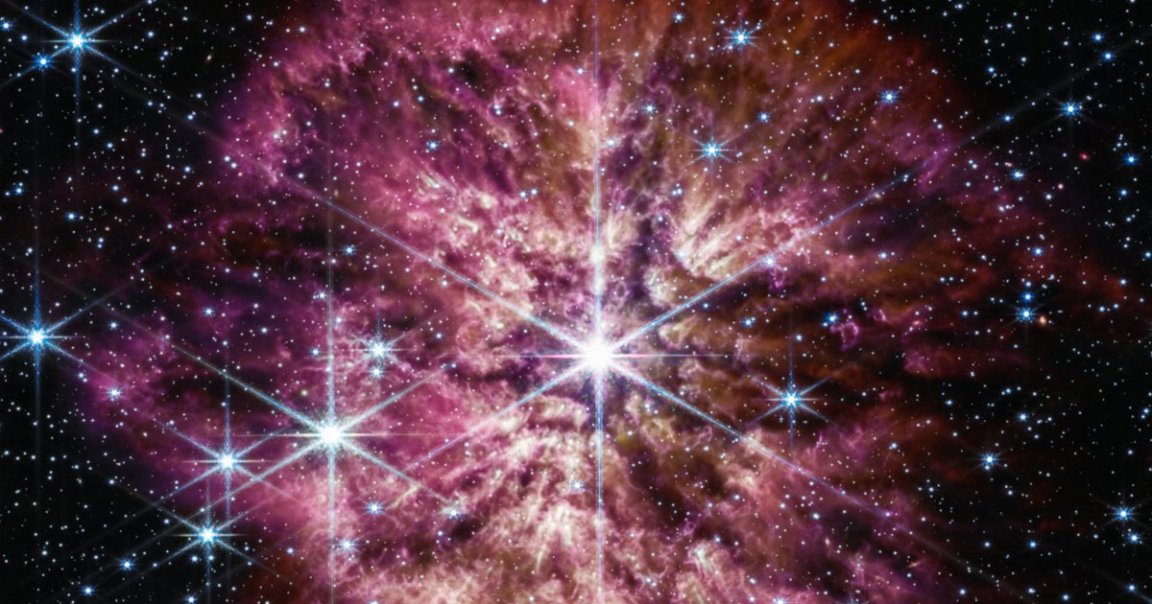
Final Blossom
Turning its sights to the constellation Sagittarius, NASA’s James Webb Space Telescope has captured a spectacular image of a star in its death throes some 15,000 light years away, NASA announced on Tuesday.
The image shows the star ejecting astronomical amounts of material as it’s getting ready to explode in a supernova, a rare sight captured in incredible detail by the observatory.
Going Supernova
The terminal stellar rarity, designated WR 124, is a special classification of a star known as a Wolf-Rayet. These are exceptionally massive stars — 30 times the mass of our Sun, in this case — that are undergoing a final and tragically transient stage of their evolution before exploding in a supernova.
Not all stars capable of going supernova become a Wolf-Rayet, however. A star would already have to be huge to qualify, but a Wolf-Rayet is so large that it continuously sloughs off huge portions of its mass, encircling itself in a vivid, scintillating spectrum of dust and gasses.
So far, WR 124 has shed around ten solar masses.
Wolf-Rayets are astoundingly hot, too. As such, their luminosity exceeds most stars in the universe, but that does not make them any less elusive to astronomers, however. Few exist in our galaxy, and the intensity of their burning and shedding means they live only a few hundred thousand years, a tiny blip on a cosmic scale.
Dust in the Cosmos
Given the rarity of the find, astronomers are eager to take advantage of the James Webb’s unrivaled capabilities to examine the star. In particular, they’re interested in WR 124’s contribution to the so-called “dust budget” of the universe.
Free-floating dust is needed to form planets, facilitate the creation of molecules, and protect newborn stars, NASA said. The big mystery is that scientists can’t reconcile the amount of dust in the universe with existing theories on how dust is formed.
In other words, there’s simply more of it out there than there should be, as far as we can tell.
“The universe is operating with a dust budget surplus,” the agency wrote.
Since Wolf-Rayets viciously shed so much of their mass in short periods of time, they’re also the universe’s best producers of dust — and perhaps the culprit, or at least a prime suspect, of the apparent dust surplus.
Until now, telescopes weren’t powerful enough to investigate the mystical dust-spouting properties of Wolf-Rayets, and “whether the dust grains were large and bountiful enough to survive the supernova and become a significant contribution to the overall dust budget,” NASA said.
“Now those questions can be investigated with real data.”
More on stars: Scientists Find “One in Ten Billion” Star System Primed to Explode in Titanic Kilonova